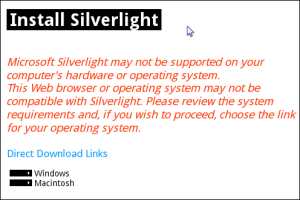Windows Server Core is a stripped-down build of Windows Server 2008 which lacks most of the GUI. It’s a great idea: more lightweight, less to go wrong, and as the Unix folk have always said, who needs a GUI on a server anyway?
That said, the Windows culture has always assumed the presence of the GUI and most of the tools and utilities out there assume it. This means that you can expect some extra friction in managing your Server Core installation.
I recently attended a couple of Microsoft conferences and one of the things I was trying gently to discover was the extent of the take-up for Server Core, and to what extent hardware vendors such as HP had taken it to heart and were no longer assuming that all their Windows server customers could use GUI tools. I didn’t come away with any useful information on the subject, though perhaps that in itself says something.
I’ve been using Hyper-V 2008 R2, which is in effect Server Core with just one role, and a recent experience illustrates my point. After considerable effort (and help from semi-official scripts) I managed to get Hyper-V Manager working remotely, in order to create and manage the virtual machines. However, I ran into an annoying problem. There are three physical NICs in this box, and the idea was to have one for the host, and two others for virtual switches (for use by guests). Somehow, probably as a result of an early experiment, the virtual switch configuration got slightly messed up. I only had one virtual switch, and when I tried to create a second one on an otherwise unused NIC, I got the message:
Cannot bind to [Network connection name] because it is already bound to another virtual network.
That wasn’t the case as far as I could see; but that was no consolation.
The problem led me to this blog post which says that, if you are lucky, all you need to do to resolve it is to remove the binding to Microsoft Virtual Network Switch Protocol from the affected network connection. To do this, just open Local Area Connection Properties … but wait, this is Server Core, I don’t have a Local Area Connection Properties dialog.
Luckily, the guy has thought of that and says you can use the command-line tool nvspbind.exe instead. Great. But where is it? It has a page on MSDN which documents the tool, authored by a member of the Hyper-V team called Keith Mange, but there is no download. How infuriating can you get? There are a few desperate requests for a download link, and a comment “Unfortunately the nvspbind is no longer available for download”, and that is that.
All was not lost. I poked around Mange’s other downloads on MSDN and found two other utilities, nvspscrub.js and nvspinfo.js. Nvspscrub.js is a tool of last resort: it removes all the Virtual Switch bindings and deletes them from Hyper-V. I did not want that, because my first virtual switch was working fine. However, I figured I could modify Nvspscrub.js just to delete the one that was troublesome. I modified the script, deleted most of the code that modified the system, and added an if condition so that only the device with the GUID which I specified would be unbound.
It worked first time, and I was able to create my second virtual switch.
Still, the fact that this problem is known, and that the only documented cure (that I can find) is in a blog post which refers to a tool that has been pulled, suggests to me that this stuff is not yet mainstream.

